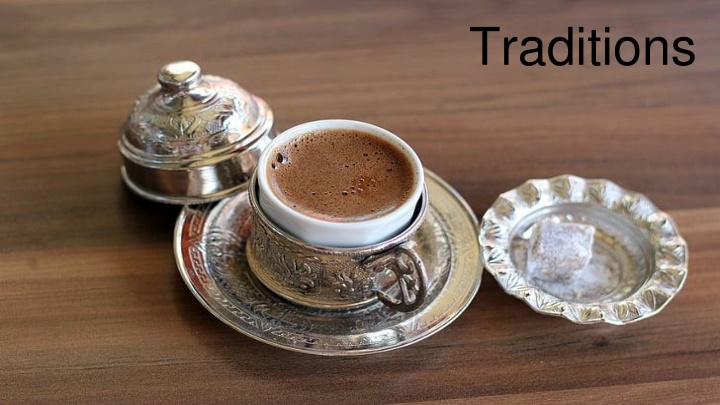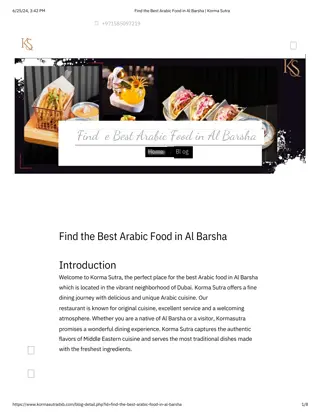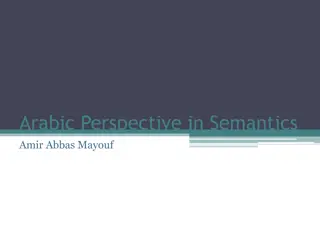The Rich Tradition of Arabic Coffee Serving in Jordan
Explore the fascinating tradition of Arabic coffee serving in Jordan, where this cultural practice goes beyond hospitality and into conflict resolution. Discover the intricacies of how coffee is served, the significance of the process, and variations in different cities like Madaba and Irbid. Immerse yourself in the rich heritage and social customs associated with this beloved beverage in Jordanian culture.
Download Presentation

Please find below an Image/Link to download the presentation.
The content on the website is provided AS IS for your information and personal use only. It may not be sold, licensed, or shared on other websites without obtaining consent from the author.If you encounter any issues during the download, it is possible that the publisher has removed the file from their server.
You are allowed to download the files provided on this website for personal or commercial use, subject to the condition that they are used lawfully. All files are the property of their respective owners.
The content on the website is provided AS IS for your information and personal use only. It may not be sold, licensed, or shared on other websites without obtaining consent from the author.
E N D
Presentation Transcript
What are traditions - Traditions are a combination of stories and beliefs that pass on from one generation to the next. - Some examples are, serving arabic coffee in homes, giving kisses on the cheek as a sign of respect, and even bargaining
Coffee culture in jordan Arabic coffee is a very important tradition in jordan as it is a big part of jordanian culture. As simple as it may seem, coffee serving in jordan is more complicated than a person might think. Serving coffee in jordan is mainly used to show guests hospitality, and is used as a form of welcoming into homes. However it could even be used to solve problems between two people or tribes, as it is normal in jordan for two families to discuss issues over a cup of coffee.
How coffee is served Arabic coffee is never served with milk, It is served from a small traditional pot (dallah) and poured into tiny cups (finja n), which are usually half-full at most, and it is meant to be sipped and savored. The most important or oldest guest is served first, filling a quarter of the cup, which can then be refilled. The dallah is usually held with the left hand and the finjan is held in the right had so that when it is served, it is with the right hand. And the guest should accept it with their right hand as well.
Different cities and coffee culture. In Madaba, cardamom is added to the coffee grounds before they are brewed. The specific type of cardamom used in Madaba is typically green cardamom, which has a stronger flavor than the more common black cardamom. Madaba coffee is typically served in small,demitasse cups. It is often served with a side of dates or other sweets
In Irbid, sugar is added to the coffee after it has been brewed. This gives the coffee a sweeter flavor that is more popular with people who do not like the taste of cardamom. The specific type of sugar used in Irbid is typically white sugar. The sugar is stirred into the coffee until it is dissolved. Irbid coffee is typically served in larger cups than Madaba coffee. It is often served with a side of milk or cream.
citation https://www.touristjordan.com/local-customs-jordan/ https://jordan-travel.com/coffee-in-jordan-the-art-and-culture/ https://myfairytrail.com/blogs/food-in-jordan/























